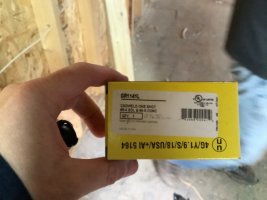Do you permit the contractors to staple Romex to the bottom of the floor joist without any protection?
Do you require a GFCI receptacle with-in 25ft of the A/C unit?
Do you allow Romex to be ran through studs in a basement with no drywall coverage or conduit protection?
Do you allow an electric water heater disconnect be omitted if you can see the electric panel through framed wall studs?
Do you require the sparky to mark the ground locations in the main panel?
Curious if the battle is worth it?
Do you require a GFCI receptacle with-in 25ft of the A/C unit?
Do you allow Romex to be ran through studs in a basement with no drywall coverage or conduit protection?
Do you allow an electric water heater disconnect be omitted if you can see the electric panel through framed wall studs?
Do you require the sparky to mark the ground locations in the main panel?
Curious if the battle is worth it?




